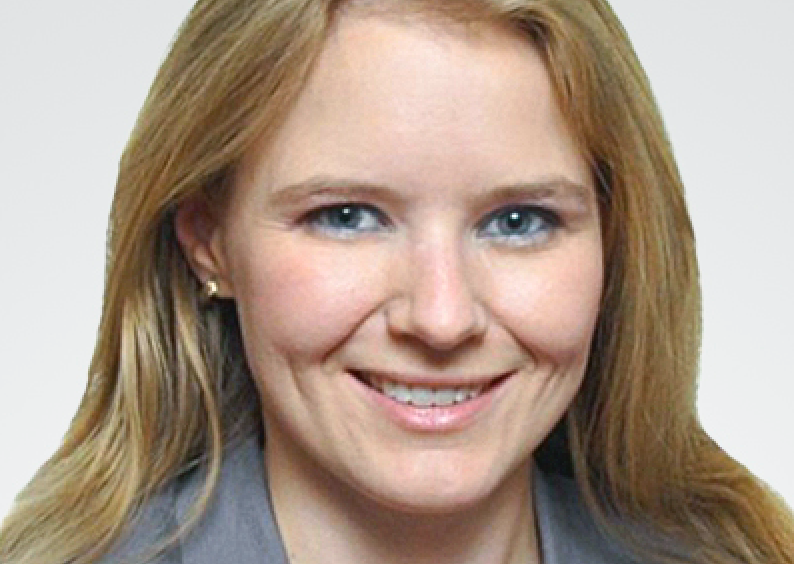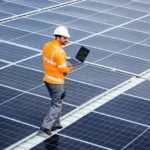“We Achieved 93% Reduction In Scope 1 & 2 Emissions Before Our Target Of 2025” – Lisa Wee, Global Head of Sustainability, AVEVA

In an exclusive interview with BW Businessworld, Lisa Wee, Global Head of Sustainability, AVEVA, shared some insights from COP28 concluded in December last year and how AVEVA is leading the charge in the sustainability space through its technological solutions.
Question: You were a part of the Conference of Parties (COP28) held in Dubai. What are your insights from COP28 that you would like to share with us?
The focus of COP 28 was getting down to action and implementation and to do that you need to be engaging with stakeholders that are at the frontline of implementation. Two notable things had been a big focus on bringing businesses but also bringing some national leadership such as Mayors, Governors of cities, etc. They are all thinking about designing for the future and building cities that are aligned with the net-zero goals. A couple of other things would be the early announcement around the Loss & Damage Fund which was very important to make sure that the nations and individuals that are most vulnerable to climate change are going to live in the future. We’ve seen a bigger focus on people but also health so that was very significant. COP28 was the first Conference of Parties where we had a Health Day and a bigger focus on agriculture because that is another sector which is massively affected by rising temperatures.
We are working to ensure that our solutions can help others to drive their sustainability agenda. One of the announcements that was most significant during the COP was to double efficiency and triple renewable capacity by 2030. It is the most viable pathway to get back on track. It is the first time we’ve had a global stocktake at a COP. This is the first time since 2015, the Paris Agreement, that a commitment was made to limit the increase in emissions and global warming to 1.5 degrees. Countries made several plans – the Nationally Determined Contributions (NDCs). This is the first time we are coming back and looking if we are on track. And the answer is “No”, but the answer is also what we need to do to get back on track. So the commitment that 118 counties made to double efficiency and triple their renewable energy capacity is seen as crucial to getting us back on track to 1.5.
Question: In what ways is AVEVA leading the charge for sustainability as a business?
We look at it in many ways. First of all, we want to ensure that we are doing everything we can to reduce our carbon footprint. And that’s why we have set very ambitious goals. We set a goal to reduce our absolute emissions by at least 90% by 2025 and we achieved that early with a 93% reduction. Scope 1 & 2 emissions for a software company are relatively small. And most of our emissions are going to be our value chain emissions. Our value chain emissions are every emission upstream of us including our procurement emissions, business travel, and commute and downstream emissions like energy. When our customers run our software and incur energy, we factor that. By design, we need to be working across the value chain. It is an ecosystem approach and that’s why we come to events like COP28 because that is the opportunity to be a part of the ecosystem discussion, engage and influence our customers and suppliers, and have discussions around alignment. At AVEVA, we looked only at our value chain. It is such an immense exercise to map the whole value chain in our footprint. You also have to be strategic with your resources. For us, we felt that in areas such as procurement and supply chain, we need to send a very clear signal.
We also need to join coalitions that reflect our values. We want to drive impact and be part of bigger groups and this is an area which is very common across business. We need not be in a supportive role. There are a couple of things that we have done. We joined the first movers’ coalition which is a public-private partnership that looks to send a very clear demand signal that we are so committed to energy transition and reducing our footprint that we are okay with paying a premium for green products. We want to send a signal to the market that there is demand for green products, so the supply needs to be increased. We have done that for aviation fuel. Right now, we need more investments in technology for sustainable aviation fuel. We need to be investing in those technologies, working with governments where there are markets for biofuels and where we could be doing more around this. The delegation that travels to India, Brazil, and other countries needs to have a discussion with the government about how we can support the development of sustainable aviation fuel. That is one example where we are using the buying power of our company to influence a whole new system of energy production.
The other area we have looked at on our own is the value chain where we said what is going to be impactful. We are a software company so we are discussing if we can have green software. What are the standards for developing green software? Is it just a transition to the cloud or are there other elements that we should be looking at? And we were quite surprised that it is a white space and there are not a lot of standards. At the time, it was the Green Software Foundation that had started to work on this, and we thought it was a credible group of companies coming together and formed to share information. We joined to help build new standards not just for AVEVA but for the industry at large and we’ve been contributing our experience – measuring the power consumption of our software so that we can start to think about when we design our applications, how can we design it so that they run as efficiently as possible and be as low carbon as possible. Thinking where the data needs to move on a network that is efficient, removing unnecessary queries, etc. Thinking through the design and development of green software and aligning with those few standards.
Sometimes we also get involved in what we call Scope 4 emissions although it is a term certainly that the standard setters are not fond of – the emissions that can be saved when customers use our software. So at AVEVA, we have been in the efficiency space right from the beginning, but we are looking at our portfolio and discussing how it is fit for energy transition, how are we walking that journey with our customers who wish to decarbonise, is it really clear to them that our solutions can help to achieve this and capability we need to add to make this easier for them. For example, we have been building libraries into our engineering solutions to make sure that when new sources of energy are being designed it is very easy to look at designing green hydrogen because there are libraries built-in with electrolyser models or renewable models. We’ve built dashboards to help engineers look at the green warming potential of different solutions we’re exploring. We are ensuring that we are evolving the AVEVA portfolio to help accelerate the energy transition journey.
Question: You talked about being able to reduce your scope 1 & 2 emissions by 93%. What are the specific initiatives that were pivotal in attaining the substantial reduction that you have been able to achieve? What were the certain challenges you encountered during the process?
For us fundamentally it was about committing to renewable energy wherever we could, so that has been a huge emphasis. In the areas where the market was developed enough, we could move quickly going from 1% to 11% to 100% over three years because it was an area where solutions were available and a part of our leadership approach is that if a solution is available now, then we should be using it and working on the more challenging areas over time. Where we have natural gas in particular powering our facility, we need to be more efficient. We have been looking to electrify our corporate car fleet. These are some of the steps we have been taking.
What we want to do over time is to ensure we can maintain those reductions and procure our renewable energy closer to the source. In our case, we have the least portfolio of assets, so we don’t own a lot of the buildings. But we are also engaging with our landlords to drive better building efficiency and encouraging them to put renewable poles outside or to be part of procuring renewable directly. Leadership in this area requires the engagement of different groups but also using influence where you can.
Question: How can we use AVEVA’s proven strategy to inspire impactful behavioural shifts towards sustainability and what are some of the noticeable practices that you have implemented within the company?
For us, it is about how our solutions can help. One of the things that we have done this year is that we are educating and upskilling our employees to be able to understand what’s at stake with climate. We are part of the climate school, an initiative to let our employees understand the basics of climate change and how it can impact them. Education and awareness are still very important and there can be a lot of jargon associated with it and it can be confusing for people. We are ensuring to keep it simple for people and how it connects back to people ultimately and biodiversity as well as the fact that we need to be able to grow as a society and have a great quality of life by still staying within the planetary boundaries.
At AVEVA, we have also been looking at incentives. For more than 3 years, we’ve had incentives linked to our ESG strategy and our goals tied back to financial bonuses that we think are very important to keep driving change. We’ve been communicating time-bound goals. We did a materiality assessment to say what are the most important areas for our business since sustainability is such a broad area but also important to our stakeholders. We set 15 time-bound goals between now and 2025 and we continue to communicate on that and report transparently on our progress. On the product side, we’re excited to be launching our sustainability accelerator program to ensure how we are working with our sales team so that they really understand the green markets, and then we incentivise people to go to those markets and support the growth of green hydrogen at scale and the expansion of renewables which we need as soon as possible. We make sure we can contribute and have a holistic vision of our portfolio.
Question: What metrics are employed to gauge the effectiveness of AVEVA’s solutions and what potential return on investment can your clients anticipate on the sustainable solutions that you are providing?
AVEVA has a very broad portfolio of solutions from engineering, operations, and organization and so I think a specific return on investment would depend on the use by the clients, but what we’re focused on doing is helping our customers to unpack the link between sustainability and profitability, especially with efficiency.
When we drive solutions, we find that we are going to be able to do more with less. We are going to be able to increase operational efficiency which normally means greater profitability, which means less waste, and less carbon. For example, in the renewable sector, we are very active. Our technologies are being deployed to help the expansion of renewables. We need to make sure that they are running as profitably as possible. To optimise the production of wind turbines, it needs to be constantly facing the wind, but of course, as equipment gets older, that doesn’t always happen. Using real-time data, using AVEVA’s system, which allows for the collection of operational data at 10-second intervals vs the industry standard for wind which is a 10-min interval, the teams at the largest energy provider in Australia were able to identify the turbines that were not functioning properly as they were unable to face the wind.
Question: Getting the focus on the Indian market, AVEVA has a unified operation centre for the Pimpri Chinchwad Municipal Corporation (PCMC). How is AVEVA working with the corporation and driving the change there?
We believe that to have the greatest impact, we require open-agnostic software. It is often referred to as a system of systems. It can pull data from all the different systems running through the city and allows you to bring in data streams and visualise them to get better and control them. It is not merely a dashboard. You can make changes through that single pane, and it is very powerful. We are happy to see the government’s initiatives around smart cities because you need lighthouses to follow. PCMC is one of those lighthouse cities. They’ve been able to see huge improvements across various sustainability metrics. The system is going to bring in everything from their water, sewage, traffic, lighting, etc. It is a very rich digital network through which they have been able to reduce their energy usage by 15 to 20 per cent. In terms of water, they’ve seen a 15-18 per cent reduction.
It is important to not forget the human aspect of it. Even with the traffic flows, they were able to cut traffic congestion by 15 per cent, thus, improving liveability. It has reduced pollution which is a huge problem. We have other cities as well that have been using this framework as part of their COVID response such as the digital infra for push-out notifications about health and vaccine programs and to communicate with your citizens in real-time.
Question: What groundbreaking digital solutions or transformative approaches for sustainability can we anticipate from AVEVA at COP28?
What our solutions do is that they allow you to bring in your data and create a digital platform which allows you to visualise, analyse, and run AI on top of what you’re doing. The portfolio is well positioned to be able to support energy transition. More recently, we have been working more closely with the Centre of Excellence for AI to understand how we can continue to use the rapidly evolving space of machine learning, the more advanced AI that helps drive sustainability. We have been building AI into our process simulation tools to allow grey box modelling around carbon capture and storage. We are increasingly looking at how we can also use AI to drive the acceleration of green hydrogen and more organised supply and demand in that market. That’s some of the work we see coming in the next frontiers.
We know that we need to help technology become commercially viable. That’s the discussion we’re having at COP to see what is commercially viable now that we can implement and how can we use digital technologies to support that. I mentioned the example of renewables, but renewables come with a grid so we’re doing a lot around grid management and supporting the infrastructure partners. We are looking at that next frontier so carbon capture and storage and clean & green hydrogen. We need to be able to reduce costs there and we know we can do that with digital.






































































































































































































































































































































































































































































































































































































































































































































































































































